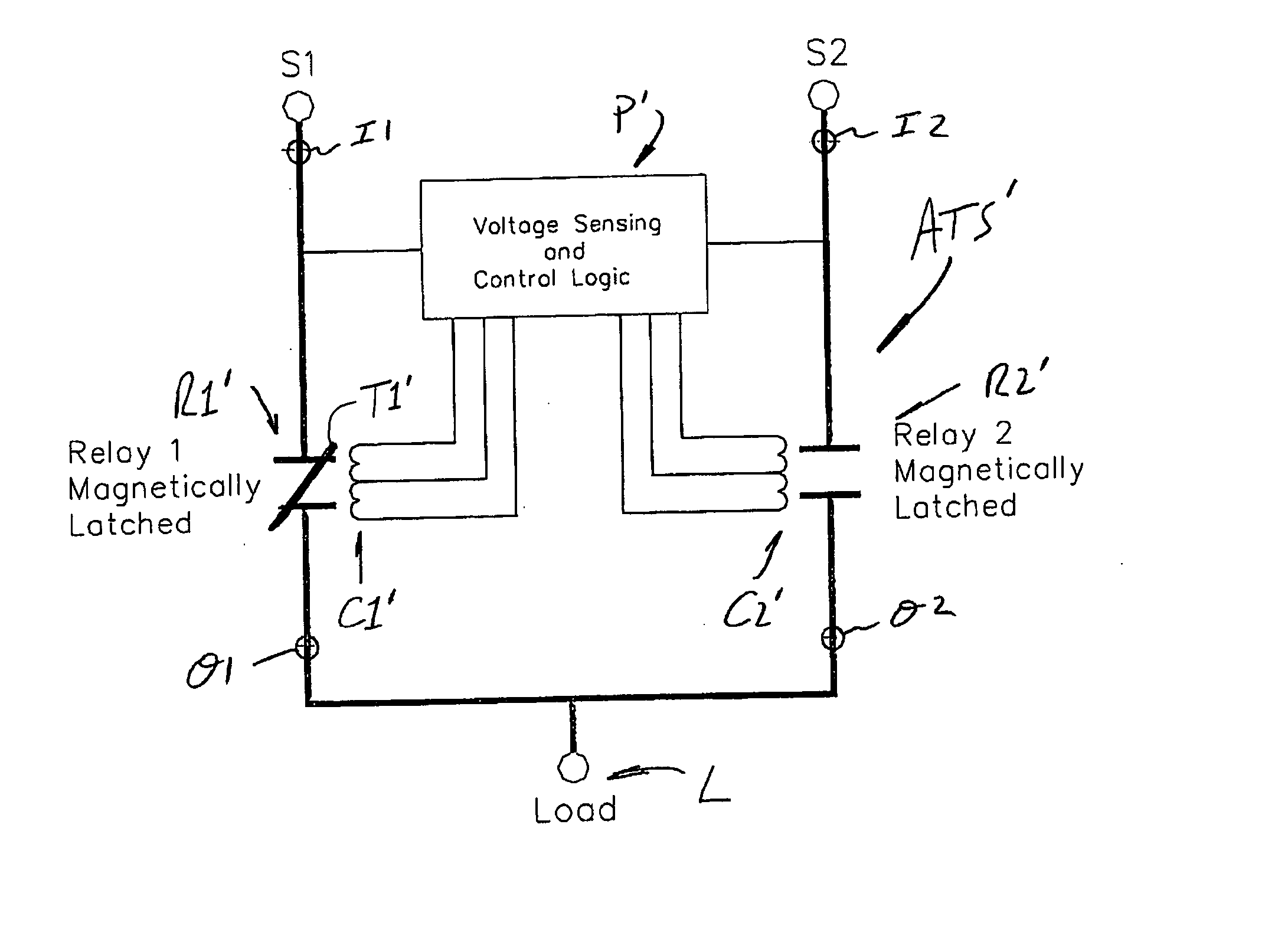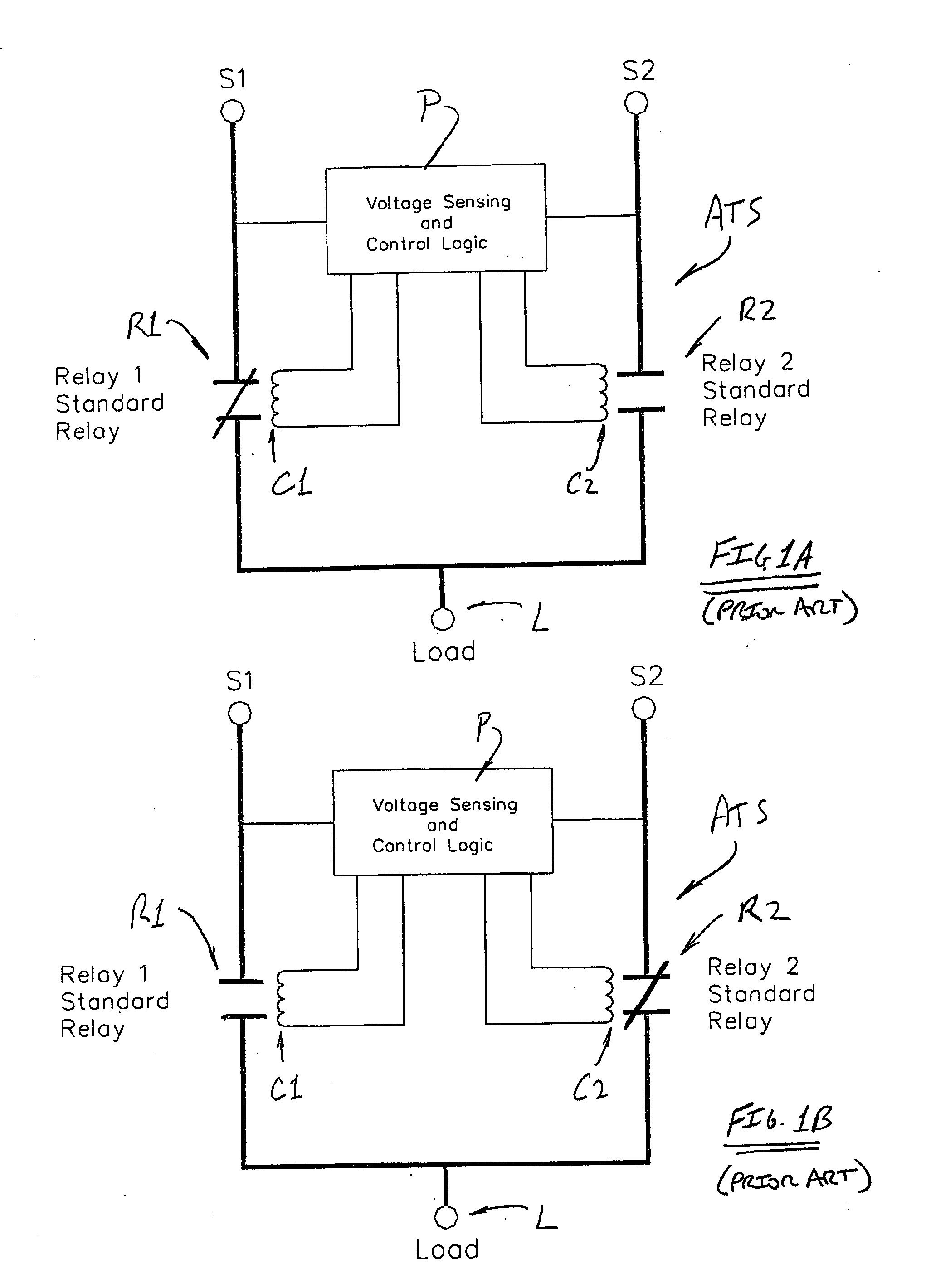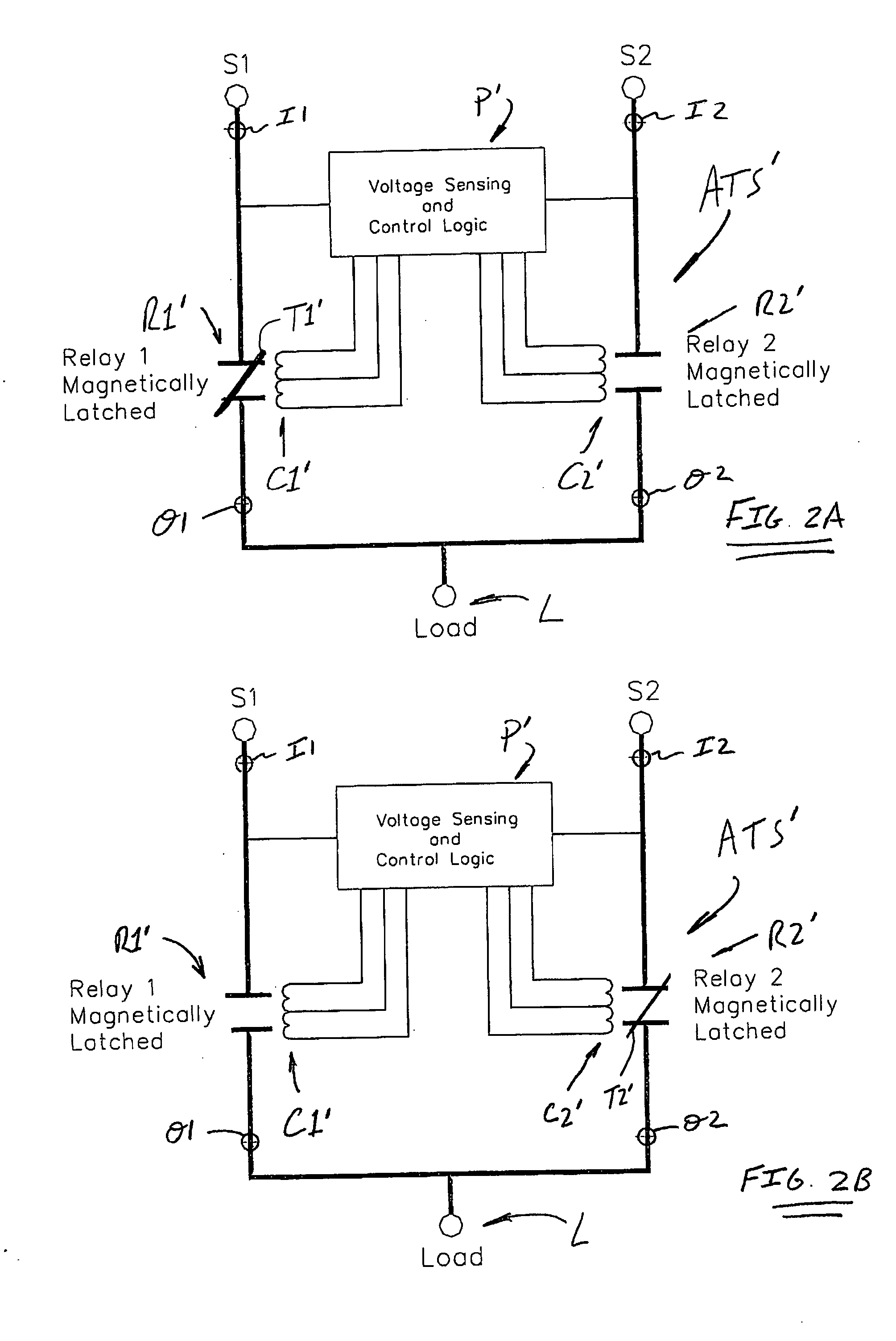Method and apparatus for transfer of a critical load from one source to a back up source using magnetically latched relays
a technology of critical load and magnetic latching, which is applied in the direction of relays, emergency power supply arrangements, transportation and packaging, etc., can solve the problems of reducing the reliability of the transfer switch device, and increasing the risk of critical load dropping. , to achieve the effect of reducing contact boun
- Summary
- Abstract
- Description
- Claims
- Application Information
AI Technical Summary
Benefits of technology
Problems solved by technology
Method used
Image
Examples
Embodiment Construction
[0016] The present invention makes use of magnetically latched relays to yield a much higher reliability automatic transfer switch product by eliminating the continuously energized state of the relays while the switch is connected to the alternate source. As used herein, the term “magnetically latched relay” is intended to encompass a relay having contacts that hold in both the opened and closed states by means of a magnet, e.g., a permanent magnet, without requiring the relay coil to be energized continuously to hold the relay contacts in either state. In a magnetically latched relay, as that term is used herein, the relay coil must be energized to move the contacts from the opened to the closed state and from the closed to the opened state, after which change-of-state, the coil is de-energized without causing any change-of-state of the relay contacts which are held in place by a magnet of the relay, i.e., the relay coil must be energized to move the relay contacts, but not to hold...
PUM
 Login to View More
Login to View More Abstract
Description
Claims
Application Information
 Login to View More
Login to View More - R&D
- Intellectual Property
- Life Sciences
- Materials
- Tech Scout
- Unparalleled Data Quality
- Higher Quality Content
- 60% Fewer Hallucinations
Browse by: Latest US Patents, China's latest patents, Technical Efficacy Thesaurus, Application Domain, Technology Topic, Popular Technical Reports.
© 2025 PatSnap. All rights reserved.Legal|Privacy policy|Modern Slavery Act Transparency Statement|Sitemap|About US| Contact US: help@patsnap.com



